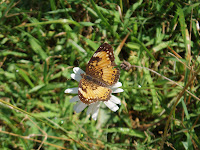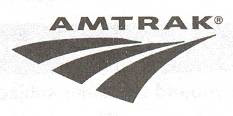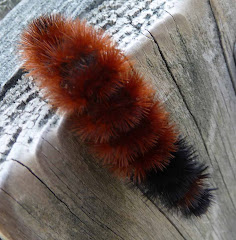
For all of those regular readers of this blog (all 2 or 3),
you may recall, this entire year (and part of next year) is the 40th Anniversary of my being called to active duty with the DC Air Guard in connection with the detention of the US spy ship the
USS Pueblo by the People's Republic of Korea (AKA North Korea), at a spot approximately 15 miles from where the above shot was taken (Kangnung Beach in the Republic of Korea).
Well, as last you may recall, we were called to Active Duty on January 26th, 1968. Our unit proceeded to sit around our "home base,"
Andrews AFB MD, from then until the end of June. At that time the "powers that were" finally decided what to do with us. Consequently, on July 16 1968, I left my wife of 1 year and 3 months, my parents, and my siblings, on the tarmack at Andrews as I climbed aboard a flight that would eventually take me to Korea.
We were flying in a chartered jet. Following WWII The Military Air Transport Service had a large inventory of multi-engine transport aircraft. In part because of this inventory, we were able to prevail in the Berlin Blockade issue. But by the early 1960's that fleet was aging fast, and the jet airliner was new upon the scene. And the decision was made to "get the Air Force out of the airline business." Consequently, whenever there was to be a movement of a large group of GI's, it would be via chartered aircraft, flown by outfits that surely had names well known such as "
Overseas National," "
Flying Tigers" (okay, some of us who knew their WWII history had heard of that outfit), and the one that I remember most of all, because it brought me home, "
Saturn World Airways." Anyway, we took our Overseas National charter out of Andrews, refueled at
Elsworth AFB, Rapid City SD, and ended up at
McChord AFB near
Tacoma WA. 
We arrived at McChord in the early evening in time to see the sun set over
Mt. Rainier in the distance. We were told to sit around the terminal and try to sleep on our duffel bags because we would be called for our flight at about 4:30 AM (and we were). And so now we come to this newest anniversary:
The Shortest Day of My Life
At 5:30 AM on Thursday July 17, 1968, our plane took off from McChord. Actually, I am being charitable, it was more like "struggled to make it into the sky." It was a
"Stretch 8" that is to say a DC 8 which had been lengthened and given more powerful engines so that it could haul more people and stuff farther. Every seat was filled with GI's, most of us Air National Guardsmen on their way to Korea, our 1 requisite duffle bag, probably some other freight, plus all the fuel it would need for the 8 hour flight to Tokyo. For those of us who worked on the flight line and knew how to read the runway markers, we nervously awaited the moment of rotation and were beginning to sweat it when we passed the 3/4ths mark on our take-off and still we were level. Finally at what seemed the last possible moment, the plane rotated, rolled a bit more, and as we looked out the window at our now climbing bird, we could clearly see the hash marks of the end of the runway outside our windows.
Nowadays, I say that "I flew across the pond," and yet I know full well, we did not really fly out across the Pacific. We took the
Great Circle Route up and over Alaska, and then down towards Japan making sure to stay in International Airspace as we approached the Pacific Shore of the then USSR. I noted this several times on our trip to Alaska, 10 years ago (hark, another anniversary is upon us), when people would ask me if I had ever been to Alaska before. I would respond "Over, but not In Alaska."
As we got to Japan, we all saw
Mt. Fuji in the distance

, and the suburbs of Tokyo below us. We had flown 8 hours. Remember, we took off on July 17, 1968 as the sun was rising. We followed the rising sun across to Japan. We never saw darkness. And when we landed in Tokyo, it was 12 noon Friday July 18. Thus, I estimate that for me July 17, 1968 was approximately 9 hours and 30 minutes long. That is the shortest day I have had to date.
What had happened, of course, was that we had crossed the
International Date Line in our flight. This is a line which has been drawn to determine where each day "starts" on our planet. It is all a very confusing thing to me, so I suggest you read Jules Verne's novel,
Around the World in 80 Days. In the last chapter, the concept of travel around the world and how it changes your relation to the sun's striking the earth is discussed. And this being Jules Verne, this scientific fact becomes the main focus of the plot.
My only distinct memory of that flight and that "shortest" day was the fact that the only food they seemed to have on board was Roast Beef and Cheese Sandwiches, which they regularly passed out to us 6 times during this 8 hour flight. Now the first time or two, we all ate them and thought they were not bad, as airline food went (then). But by the 5th time, we were starting to get almost "surely" about the whole thing. And the Stewardesses we had on-board, undoubtedly taking this job because the ones with the "glamor outfits" such as United, American, and Pan Am, were unattainable for them, did not know how to handle this (which seemed strange to me then and now, because I am sure we were not the first group of GI's to react in that way). At any rate, that is what I remember about that, the shortest day of my life. And, by the way, since that time, I have never eaten a Roast Beef and Cheese sandwich, so don't even ask (M&C, bless you I know you'all won't).
Tokyo was only a re-fueling stop for us, as our final destination was Korea. We took off a few hours after landing a
Yakota AB, and flew on to
Kimpo AB outside of
Seoul Republic of Korea . From there we were bused to
Osan AB our final destination. There we would experience the wonders of trying to keep planes up in the air that were older than we were, with very little support, particularly from the system, since everyone knew the "main effort" was Viet Nam.



 Oh Look, our house is looking a little ragged around the edges. It needs a haircut. We need to get a barber and his cutting shears.
Oh Look, our house is looking a little ragged around the edges. It needs a haircut. We need to get a barber and his cutting shears.


 (P.S. GrandMom has entered the digital age and these are shots from HER new digital camera.)
(P.S. GrandMom has entered the digital age and these are shots from HER new digital camera.)




 Lewisburg
Lewisburg













































